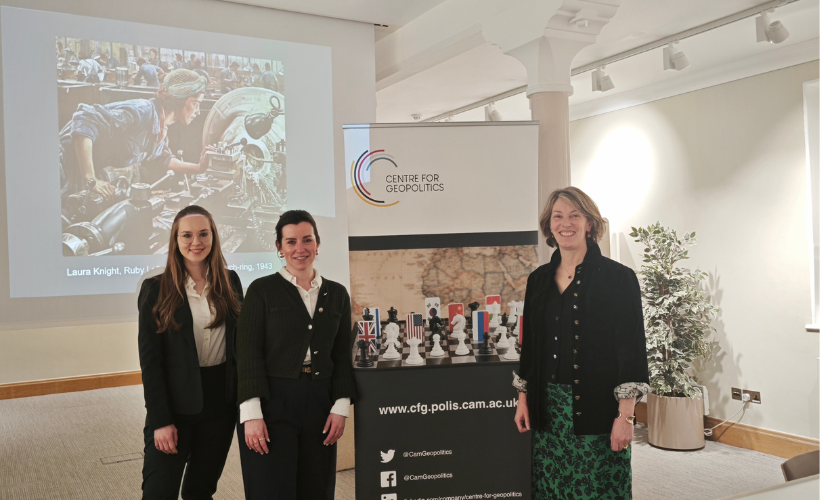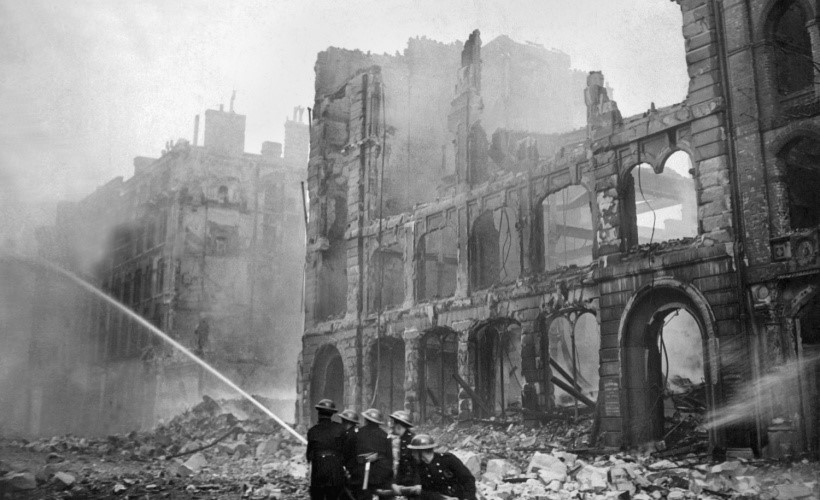By Professor Brendan Simms
On 14 August 1941, British Prime Minister Winston Churchill and US President Franklin Delano Roosevelt met in Placentia Bay off Newfoundland and issued a joint declaration. It set out a vision for a new global order based on international cooperation, social justice, free trade and equal access to the world’s resources. The Charter also committed the United States and the United Kingdom to ‘certain common principles’, such as a rejection of territorial change without the ‘freely expressed wishes of the peoples concerned’ and support for ‘self-government’, which were plainly directed against Hitler’s Germany. Article six of the Charter explicitly looked forward to ‘the final destruction of the Nazi tyranny’. The Charter led to the ‘Declaration by the United Nations’ in January 1942, which subsequently became the basis for the United Nations Organisation we know today. Its legacy was also invoked by US President Joe Biden and UK Prime Minister Boris Johnson in June of this year when they issued their ‘New Atlantic Charter.’
For Churchill, the Charter was something of a disappointment, because it did not bring an immediate American entry into the war, but for Hitler it was still a considerable shock. He was particularly infuriated by article six with its reference to the ‘final destruction of Nazi tyranny’. Just as Churchill had issued a joint statement with Roosevelt, Hitler responded after consulting with the Italian dictator Mussolini, his main ally. Their joint communiqué was published towards the end of August 1941. ‘The new European order which will emerge from this war,’ Hitler and Mussolini announced, ‘must remove the causes of past European wars’; here the Jews were meant. ‘The elimination of the Bolshevik threat and of plutocratic exploitation,’ they continued, ‘will enable a peaceful, harmonious and fruitful cooperation of all peoples of the European continent both on political as well as on the economic and cultural levels’. The Charter increased Hitler’s determination to confront Roosevelt. It was he who declared war on the United States in December 1941, after Pearl Harbour, rather than the other way around.
The Centre for Geopolitics will mark the eightieth anniversary of Atlantic Charter with two in- person events around the forthcoming Penguin/Basic book Hitler’s American gamble. Pearl Harbour and Germany’s March to Global War by Brendan Simms (the Director of the Centre) and Charlie Laderman (of King’s College London). The first will be in Cambridge this autumn, the second in New York in collaboration with Cambridge in America in the early summer of next year. Details will follow in due course. In the meantime, you can find out more about Hitler’s American gamble. Pearl Harbour and Germany’s March to Global War here:
As we prepare to commemorate the eightieth anniversary of the Pearl Harbor attack, it remains etched in the public memory as the moment that ended America’s isolationism and led inevitably to the Axis defeat. In fact, as this gripping new account of the attack and subsequent four days shows, the Japanese assault initially did nothing of the sort. Across the world, the “day of infamy” brought uncertainty rather than clarity, plunging America into a new, separate war in the Pacific and threatening to leave Britain and the Soviet Union at the mercy of Hitler’s Germany.
In HITLER’S AMERICAN GAMBLE: Pearl Harbor and Germany’s March to Global War (Penguin Press and Basic Books; November 2, 2021), Brendan Simms and Charlie Laderman contend that the Japanese bombing of Pearl Harbor was not the turning point of World War II; they argue instead that it was Hitler’s declaration of war on the United States – occurring four days later on December 11, 1941 – that clinched the convergence of two struggles into a united global conflict and changed the course of the war. Rather than an inexplicable blunder, as it is often portrayed, Simms and Laderman argue that Hitler’s intervention was a calculated gamble, one that can only be understood in a truly international context.
The five days from December 7 – 11 were the most exciting and consequential of early 20th century diplomatic history. Simms and Laderman provide hour-by-hour, often minute-by-minute, accounts of the worldwide scramble to assess the impact of and response to Pearl Harbor. Stalin and Churchill, in particular, struggled with the US decision to suspend Lend-Lease aid after Pearl Harbor, which threatened to deprive their armies of a crucial logistical lifeline. As a result, Churchill did not, despite his subsequent claim, sleep “the sleep of the saved and thankful” after the attack. Japan’s leaders hoped that Hitler would honor a private commitment to declare war, but they, too, were uncertain. Nor was there an inexorable sense that Washington would instigate a formal state of war with Germany. As Roosevelt was well aware, many Americans remained unconvinced that their country should entangle itself in a conflict with the Third Reich as well as Japan. In the end, only Hitler exercised the decisive certainty that brought the US into the European fray. The world that came after the Pearl Harbor attack was never an inevitability.
Brendan Simms is a professor in the history of international relations and fellow at Cambridge. He is the author of many books, including Europe and Hitler. He lives in Cambridge, UK.
Charlie Laderman is a lecturer in international history at King’s College, London. He is the author of books on US-UK foreign policy, including Sharing the Burden. He lives in London, UK.
Available to buy from Penguin, Basic Books and Amazon







